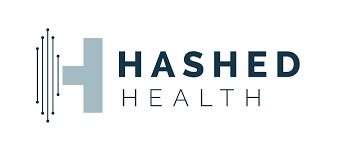How Social+ Design Patterns Will Unlock a Decade of Consumer Engagement
Healthcare is beginning a massive shift towards the consumer. Individuals are becoming more aware of healthcare cost and quality. They are taking greater control over their healthcare decisions and data. Suddenly every consumer-facing healthcare company is confronting an imperative to provide consumers with the experiences and information they expect and can trust.In McKinsey’s 2022 Provider CSuite study, 90% of healthcare executives said healthcare consumerism is a top priority. Naturally, enterprises and startups are looking at innovations and best practices from the tech and retail community for insights.One innovation that has gained significant attention is the integration of social technologies with healthcare, often referred to as Social+. Social+ encompasses the use of social media platforms, digital communities, and online networks to enhance healthcare delivery and improve consumer outcomes. Social+ centers on the integration of a social experience into a transactional system or tool for the purpose of improved consumer engagement and retention, as well as improved product defensibility and growth.Healthcare is inherently social, so successfully integrating social experiences into our products represents an important design pattern that could unlock new levels of consumer engagement and compliance.In this blog post, we will explore the value of Social+ in healthcare and how it could improve clinical and financial outcomes for consumers. At Hashed, we are considering the best use of these design patterns for many types of “consumers,” from patients to workers such as nurses, supply chain analysts, and other employees.Healthcare Consumerism
Enhancing Engagement:
One of the primary benefits of Social+ in healthcare is its ability to enhance consumer engagement. Social media platforms provide an accessible and convenient avenue for consumers to connect with others and participate in discussions about their health interests in a safe and trusted way. Consumers can join online communities, engage in peer support, and access resources that empower them to take an active role in managing their well-being. By fostering collaboration and shared decision-making, Social+ encourages consumers to become more informed and involved in their healthcare journey.The same is true for our workforce. Supply chain analysts and front-line nurses are in need of communities they trust and resources that can help them succeed in difficult professional experiences.Education and Awareness:
Social media platforms have emerged as powerful tools for health education and awareness. Traditional and non-traditional caregivers can leverage these platforms to disseminate accurate and reliable information about various medical conditions, preventive measures, and treatment options. Social+ facilitates the rapid spread of health-related content, enabling it to reach a wider audience and bridge the information gap. Through engaging posts, infographics, videos, and live Q&A sessions, healthcare providers can educate and empower individuals, ultimately promoting healthier lifestyles and disease prevention.Remote Monitoring:
In recent years, there has been a significant shift towards remote patient monitoring, allowing healthcare providers to monitor consumers’ health status from a distance. Social plays a vital role in this context by providing a platform for consumers to share their health data and communicate with their healthcare team. This combination of data sharing and communications is what’s important. Social integration could enable continuous monitoring, data-driven decision-making, particularly for individuals with chronic conditions.Community Building and Support:
Living with a chronic illness or a rare condition can be challenging, and consumers often find solace in connecting with others facing similar experiences. Social+ platforms create virtual communities where individuals can share their stories, seek emotional support, and exchange valuable insights. These communities foster a sense of belonging, reducing feelings of isolation and improving mental well-being. Through Social+, consumers can connect with consumer advocacy groups, access reliable resources, and find guidance from individuals who have walked similar paths. This sense of community empowerment enhances the overall consumer experience and contributes to better health outcomes.Data Collection and Research:
Fixing healthcare requires data from consumers. We have to responsibly and safely acquire data on cost, quality, outcomes, and experience. By engaging consumers in communities that are valuable to them, enterprises are more likely to get the data they need to gain valuable insights into public health trends, behaviors, products, and social determinants.Conclusion
Social+ has the potential to transform the industry by revolutionizing consumer engagement, promoting health education, enabling remote consumer monitoring, fostering communities of support, and facilitating data collection. By embracing the power of community, healthcare innovators can create a consumer-centric ecosystem that empowers individuals and revolutionizes the way we approach healthcare in the modern era.